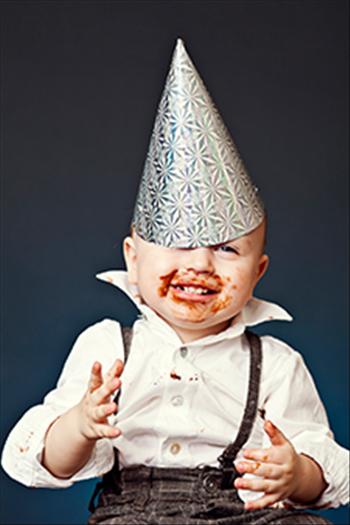Going to a party
Duration/age

When you read a party invitation together you will be looking at what time the party is being held, the location of the party, whether it is indoor or outdoor and what will happen at the party.
If the party is at lunch time you can predict what food will be served compared to a party that happens early in the morning. If the party is happening in the park you can explore with your child what activities you think will take place compared to an event happening at the bowling alley where you know what will happen. The theme of the party will help to identify what your child will want to wear.
Skills this activity improves
Why does this matter?
Reading the invitation helps children to learn that when information is written down it gives us meaning that helps us to make decisions. From the invitation we are able to gain an understanding of the time and place of the event, what will happen at the event and how we may need to prepare ourselves for the event. For example, you might need to eat before you go and wear old clothing. When we have all of the pieces of information we are able to make a decision about whether or not we want to go.
What does this lead to?
Reading the invitations helps children to develop concepts of print which is the beginning of learning to read. When we carefully read the information within the invitation we are starting to analyse, measure and compare our world. We are doing this as we explore time, the location of the event and who will be there. This is the beginning of making decisions based on information.
Language to use
- Time, day, date, calendar
- Morning, afternoon, evening, lunch time
- Park, pictures, home
- McDonald’s, Puzzle Park
- Together, on your own, family, all of us
Questions to use
- Who else will be at the party?
- Does it matter if we are not there right on time?
- Do we need to take anything to the party?
- The party is at 1:00pm, we also need to do the shopping and take oranges to Grandma. Will we do them before or after the party or one in the morning and one in the afternoon?
Useful tips
- If your child has never been to a party talk about what will happen at the party.
- Talk to your child about whether it is a party that the adults stay at or if it is one that children are left on their own.
- You might also like to take a look at the Calendars activity.
- Remember to talk to your child in your home language.
More ideas
- Borrow books like “The Doorbell Rang” and “It’s MY Birthday” from your library.
- Make a list of present ideas with your child.
- Allocate an amount of money for the present and together explore the toy catalogues or online shops to see what you could purchase for that amount.
Variation by age
Birth to two year olds
- Borrow books like “The Doorbell Rang” and “It’s MY Birthday” from your library.
- Ask your child to help select and wrap the present.
- Talk about the different ages of members of your family and make an age chart.
Three to five year olds
- Borrow books like “The Doorbell Rang” and “It’s MY Birthday” from your library. Ask your child to help you make a card.
- Allocate an amount of money for the present and together explore the toy catalogues or online shops to see what you could purchase for that amount.
- Create a calendar of special dates with your child. For example, you could add family birthdays by using stickers or writing the name in the date area.
Questions to ask
- How old are you?
- How old is ______?
- Who is going to the party?
- What do you think you will eat at the party?
Questions to ask
- Are all of the children in your class the same age? How do you know?
- Do you ever catch up in age to someone else?
- What does ______ like to do?
- What do you think will happen at the party?


